A lthough Rome is still referred to as the “Eternal City,” things are evolving so quickly that it’s impossible to do what the Romans do when you’re there — especially as the tastes of the locals have broadened, diversified, and changed in recent years. When it comes to restaurants, quick bites and food shopping in Italy’s capital, the possibilities are delightfully overwhelming. Revitalized industrial neighbourhoods with cool new businesses are emerging and a new crop of ambitious cocktail bars with adventurous bartenders have opened in the past decade. Innovative Michelin-star restaurants are competing with old-school fine dining institutions, and food and beverage offerings in recently opened luxury hotels are pulling out the stops.
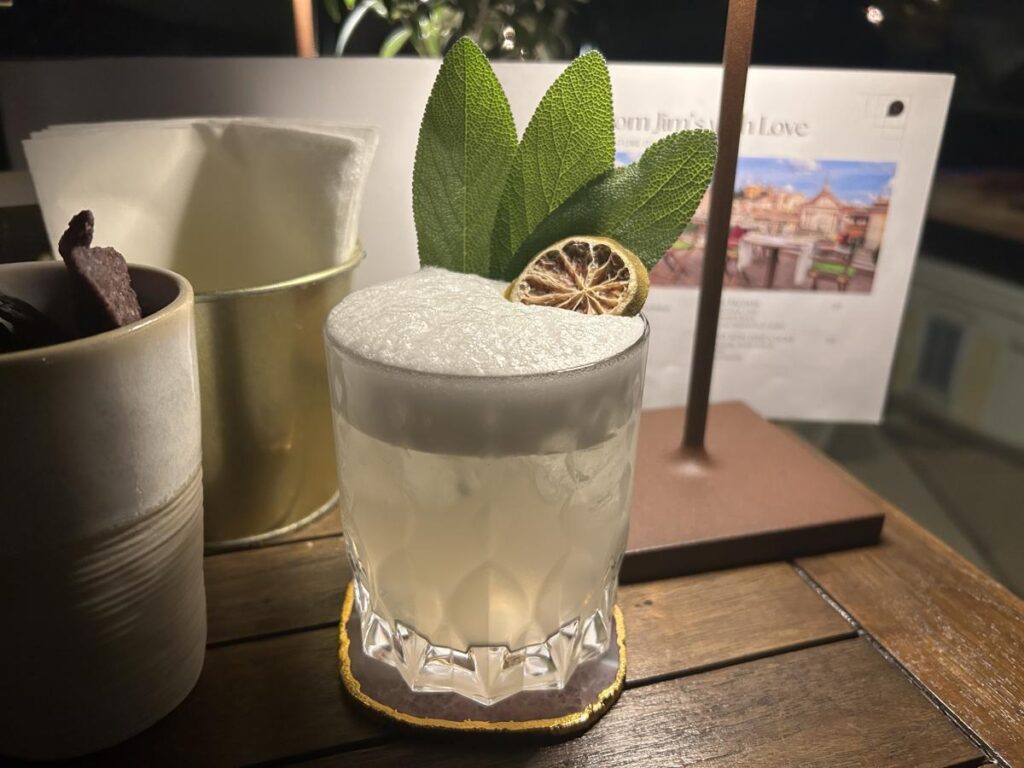
Anyone who wishes they had a friend in town to lead them to the best places will find Lauren Caramico’s Davvero Rome Tours the answer to their food travel prayers. The Italian-American native New Yorker who set down roots in Rome in 2016, builds every custom tour based on her informed perspective growing up with Italian traditions, the lessons she learned about what makes food truly Italian after making her big move, and her personal relationships with chefs, restaurateurs and bartenders she’s cultivated over time.
Davvero (which translates into English as “really!”) has hit its stride in the past 18 months — so much so that the decision makers at Sofitel Roma Villa Borghese, which itself had a renaissance during the same time frame, include Lauren’s tours as part of its prestigious roster of experiences for hotel guests. Visitors staying elsewhere can book a tour of the city through her website as well. Davvero Rome is a “passion project” that Lauren feels empowers clients to make the city their own, while also supporting the small businesses that are bringing something new to the old town.
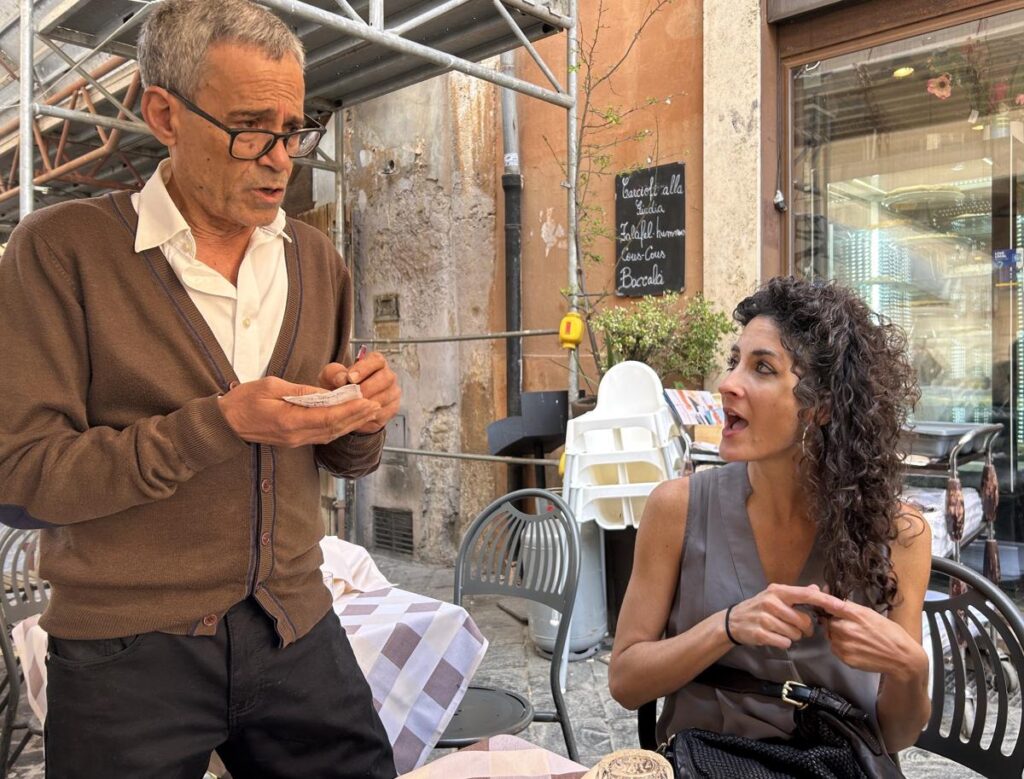
Small Bites, Big Flavours
A Davvero experience begins over a Zoom meeting or phone call to lay the foundation of a custom tour. Lauren translated my interests and those of my travel companion/fellow writer, Jody Miller, into an itinerary while addressing the challenges of having one omnivore participant and another observing a kosher diet (no pork or shellfish). Based on our mutual interest in exploring different Jewish communities abroad, she decided Ba’Ghetto, one of the most enduring and beloved restaurants in Rome’s Jewish Quarter would be the trailhead for the four-hour tour. While we were delighted by two different preparations of Roman artichokes in their peak season, the context in which they were served ensured more than the food would linger in our memory. Our host breezily explained in English the significance and continued cultural impact of Judeo-Roman food culture while intermittently chatted with the restaurant staff in Italian, who embraced her as one would extended family.
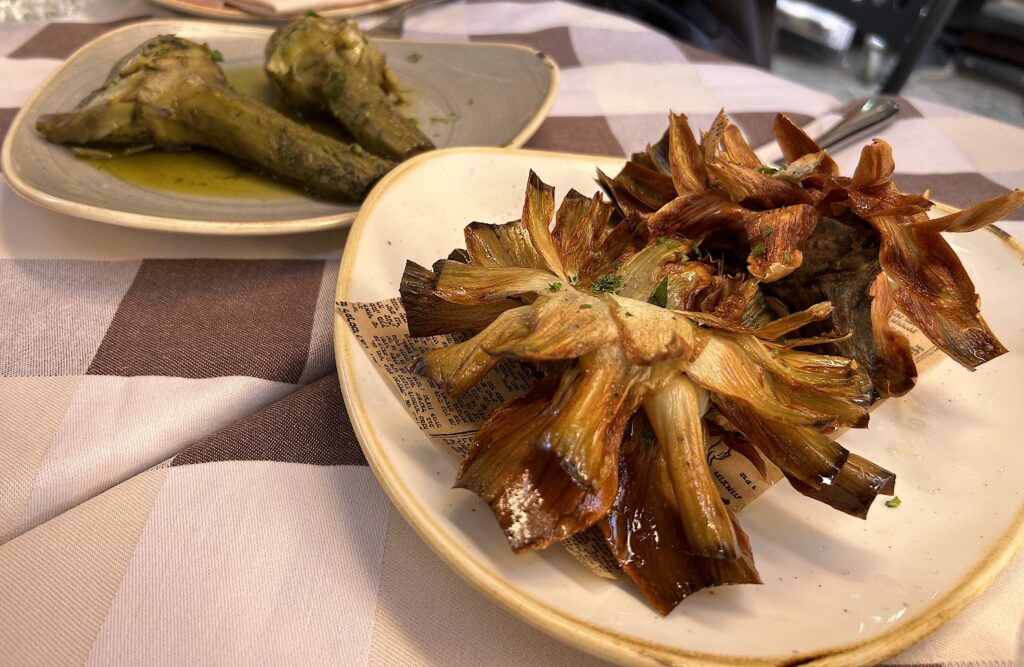
Our tour expanded outward like spokes on a wheel. After the artichokes, accompanied with fresh flatbread to soak up the herbaceous oils they were cooked in, we passed a tiny kosher bakery with impressive pre-Shabbat lines and aromas that took us back to our own respective childhoods en route to Beppe e I Suoi Formaggi (Beppe and His Cheeses), one of Lauren’s favourite cheese shop/cafe hybrids. Although it has the clean, frill-free character of a neighbourhood delicatessen, it shines through its organic wine menu and beautifully curated cheese flights. Lauren’s repartee added consistent personalized flavour to the trek, as she introduced us to various owners and managers. Before topping off the tour at her favourite gelato shop, we hit Antic Forno Roscioli in Sant’Eustache (known for its near perfect expression of Roman pizza), and Trastevere-based Trapizzino, whose trademarked reinventions of Italian bar food with a Sicilian influence is one of the best values in town (a very-filling Trappizino will set you back 5€, or $6 USD).
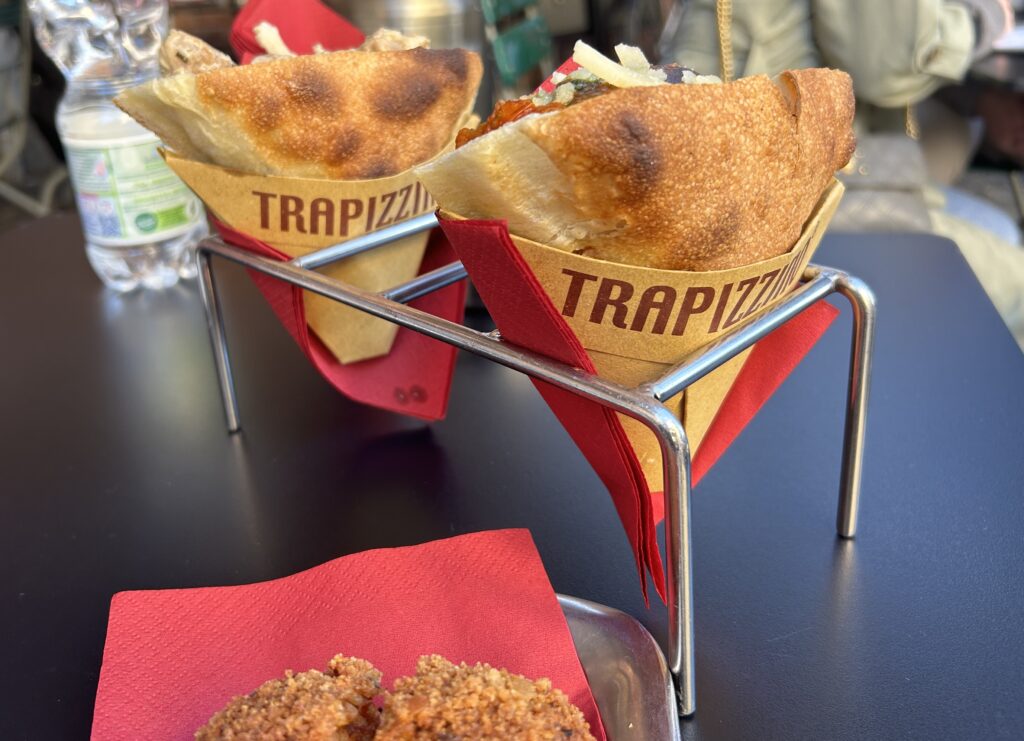
As Lauren had read some of my craft cocktail-related articles before our original Zoom call, she persuaded us to add in a Saturday night “VIP Bar Tour” that would take us back to Trastevere. Across the square from Trapizzino, we began our evening at Freni e Frizzioni, one of the cleanest, most elegant, and inventive hipster dive bars. Everybody we encountered was kind and welcoming. It also had a spread of mostly vegetarian snacks — all offered free with the purchase of drinks — that took up half the venue. Lauren explained that a complimentary spread of bar snacks is an essential part of the cocktail experience in Rome and much of Italy — even hours after the sun has gone down.
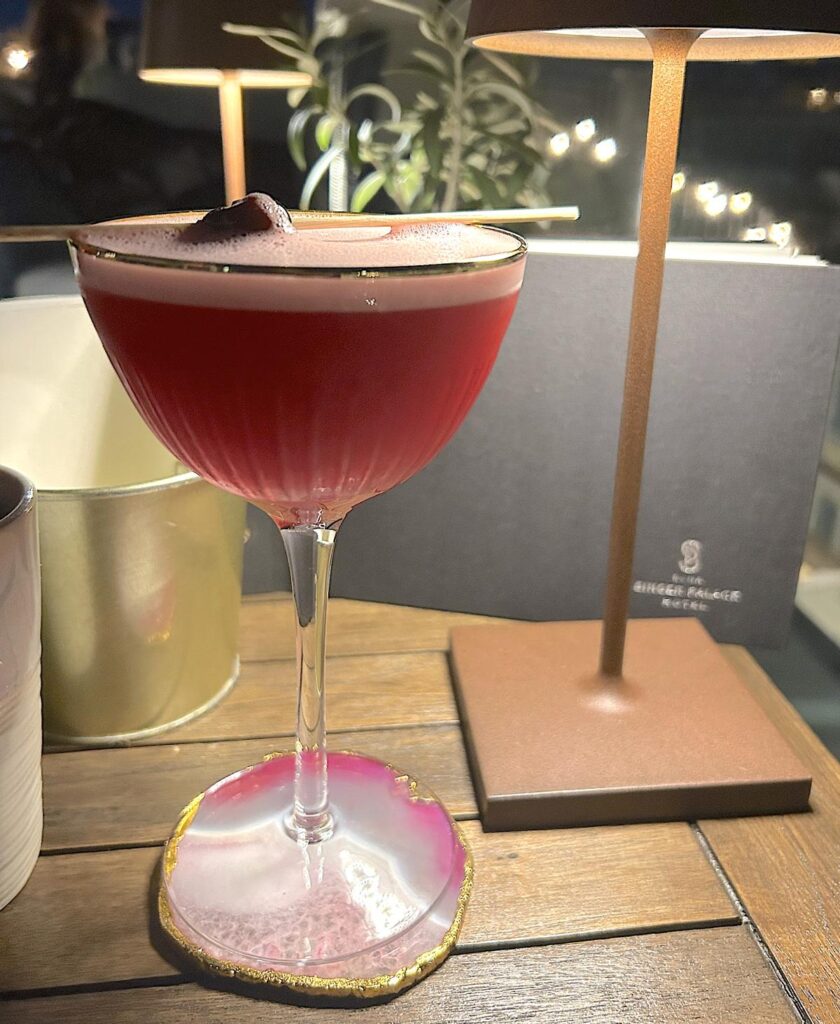
“You can never separate food from the aperitivo experience,” she explained. “I am all about taking clients to food and drink places mainly frequented by locals… not places that exist primarily for tourists. I want you to see for yourself that aperitivo hour is so much more than the American happy hour or pre-dinner beverage. It is a ritual here in Italy, and its the way to catch up with friends over food and drinks, with a new breed of bartenders reinventing traditional aperitivo settings, creative drinks beyond the Aperol spritz, and serving more than cheese and charcuterie.”
Our VIP Bar Tour was thoughtful journey through the evolution of the craft bar scene that has only taken shape within the past decade. From the 80s Tokyo-meets-science-y vibe of Drink Kong, to the timeless speakeasy elegance of The Jerry Thomas Project (regarded as the forerunner of the modern Rome cocktail scene, under the direction of award-winning bartender Tony Parlepiano) and The Court, a sophisticated hotel establishment overlooking The Colosseum (created by Matteo Zed, another hometown bartender made good, using the skills and ideas he picked up at some of New York City’s most fashionable establishments), we observed a diverse cross section of locals who made these places their go-to bars.
Lauren also proved to be a lifesaver, thanks to her recommendations for the best grab-and-go options in town. I told her I had snagged a hard-to-get 1 pm reservation at the Borghese Gallery and Museum. Eateries in the primarily residential area open before or after my visit would either be formal cafes or tourist traps, she cautioned. To keep things reasonably priced and genuinely local, she recommended picking up something from Il Gianfornaio Piazza di Spagna bakery, or Salmoneria’s smoked salmon sandwiches, and taking advantage of the beautiful early spring weather in Borghese Park.
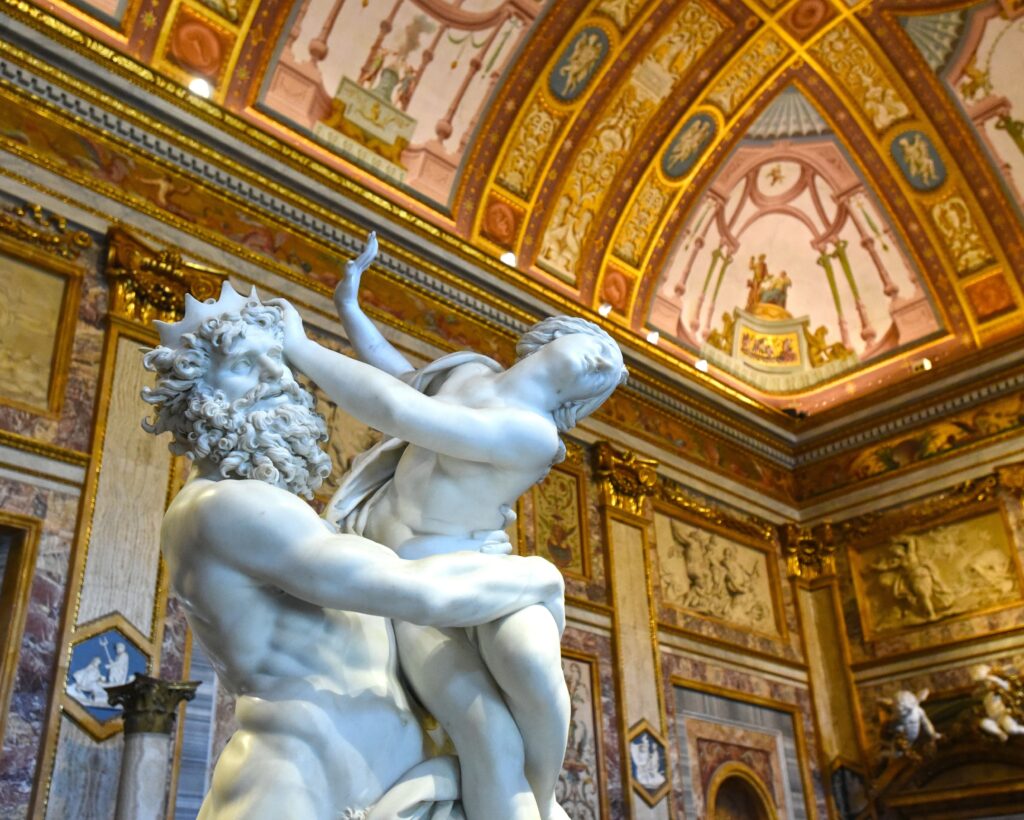
New Epics Unfold
The opening of several five-star hotels over the next 18 months — including the Bulgari Hotel Rome, Six Senses Rome, The Rome Edition, and Grand Hotel Via Veneto — was a popular topic of conversation among Lauren and her bartender and restaurateur friends. The conversation-starting Singer Palace Hotel, opened in 2018 and built into the former site of the Singer Sewing Machine company’s European headquarters, contains 30 deliciously decorated rooms, each with its own eclectic mix of art books, lamps, paintings, sculptures, plush sofas, throw pillows, and hand-selected desks, coffee tables and nightstands. Full-sized containers of Ortigia Sicilia “ambra nera” (black amber) scented soap, shampoos, and lotions aromatically compliment the surroundings. It is topped with a multi-level dining experience incorporating Jim’s Bar (one of Lauren’s favourites) and The Terraces Restaurant, adding a chic but relaxed charm to a city once revered for its formal old world hotels.
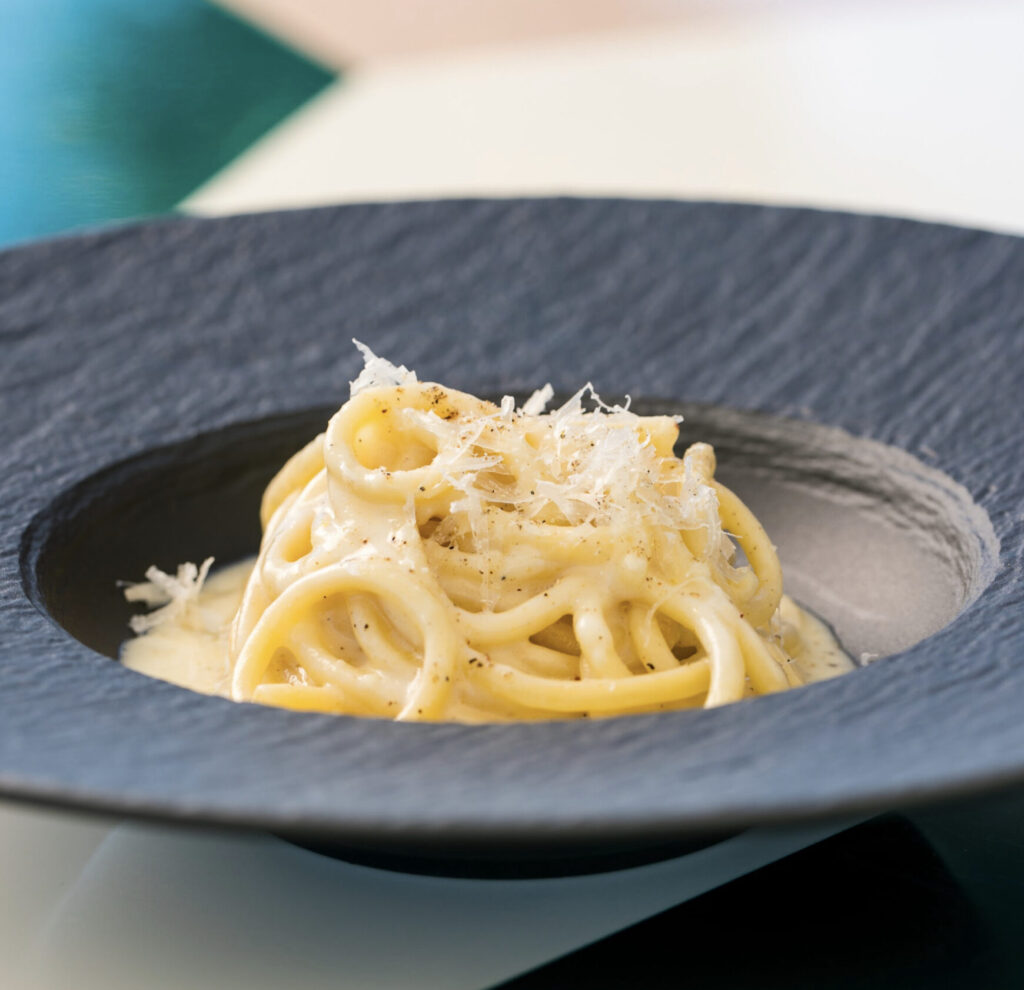
When you are ready for a break from the colourful chaos of the city’s main tourist hub, just walk back to the hotel, ascend to the roof via the glass elevator, order a perfect bowl of cacio e pepe or fusilli with basil pesto or a seasonal sauce, and take in the sights of Rome above the crowds. Jim’s Bar, headlined by award-winning bartender Federica Geirola, whose original cocktails are as fanciful as the hotel’s unexpected decor. Playful aperitivo snacks include tempura-inspired fried vegetables (including sage and stuffed zucchini flowers) and curried meatballs.
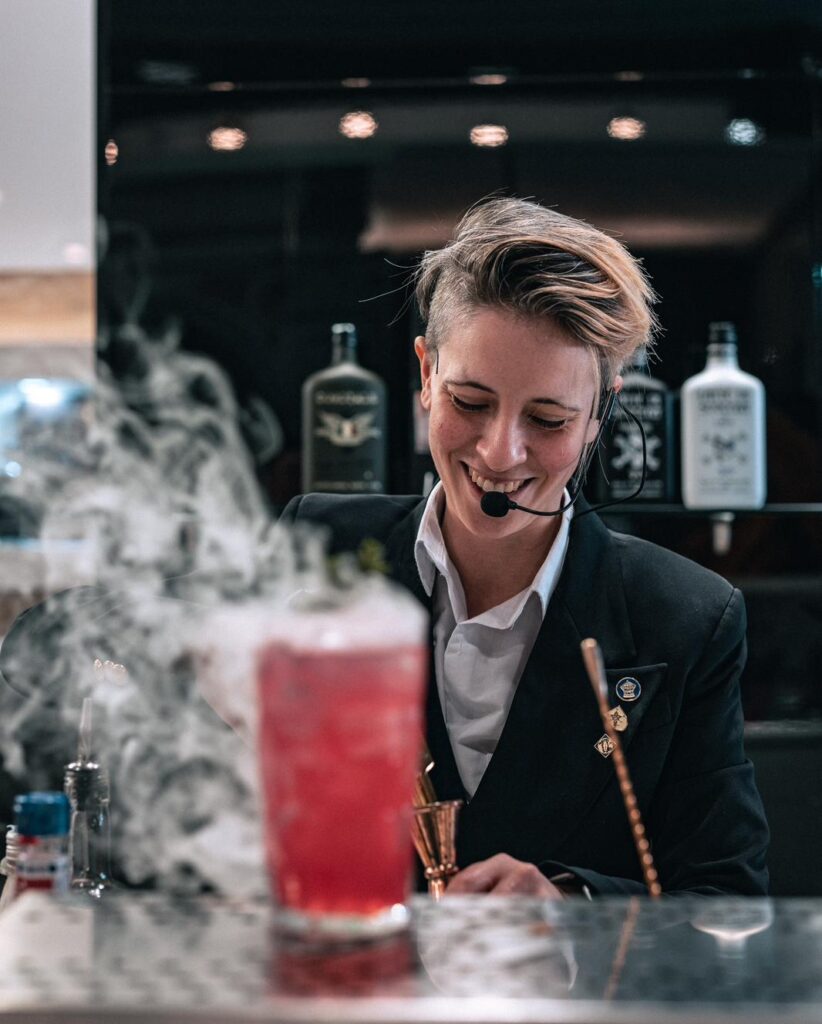
The Sina Bernini Bristol is the newest iteration of a legendary grand hotel opened in 1874 and named in part for architect and sculptor Gian Lorenzo Bernini (Piazza Barberini Square and the sculptor’s Triton Fountain sits across the street). While the hotel is a part of the Marriott Autograph Collection, the hotelier family that acquired it and an adjoining bank building invested €10 million to overhaul the colour scheme, mix in cozy but sharp furnishings from different 20th and 21st century decades, and top it all off with the rooftop Il Vizio Restaurant and Bar, its signature restaurant whose locations elsewhere in Italy have made a splash.
The Rome edition of Il Vizio Restaurant and Bar is already poised to be a formidable challenger to other nearby fine dining institutions. The key to its success lies in its inventive, risk-taking dishes that combine Roman, Middle Eastern, Latin American, and Japanese influences in a stylish and cohesive menu. Under the direction of Chef Andrea Marella, updated Italian standbys work harmoniously with sushi and small bites influenced by other parts of the Mediterranean.
“We’re proud of the technological and culinary innovations created by our chefs and barmen, putting things into play such as magnetic stirrers, smokers, a Roner for vacuum cooking, and a Hoshizaki ice machine that delivers transparent, compact, and slower melting ice,” says Francesco Salvo, brand strategy manager for Sina Hotels, and a proud member of the hotelier family transforming the property’s aesthetic and food program, blending the old world and new world seamlessly. Fantastic views, a sleek bar area, exceptional original cocktails, and a lovely, welcoming staff add to the experience at Il Vizio Restaurant and Bar.
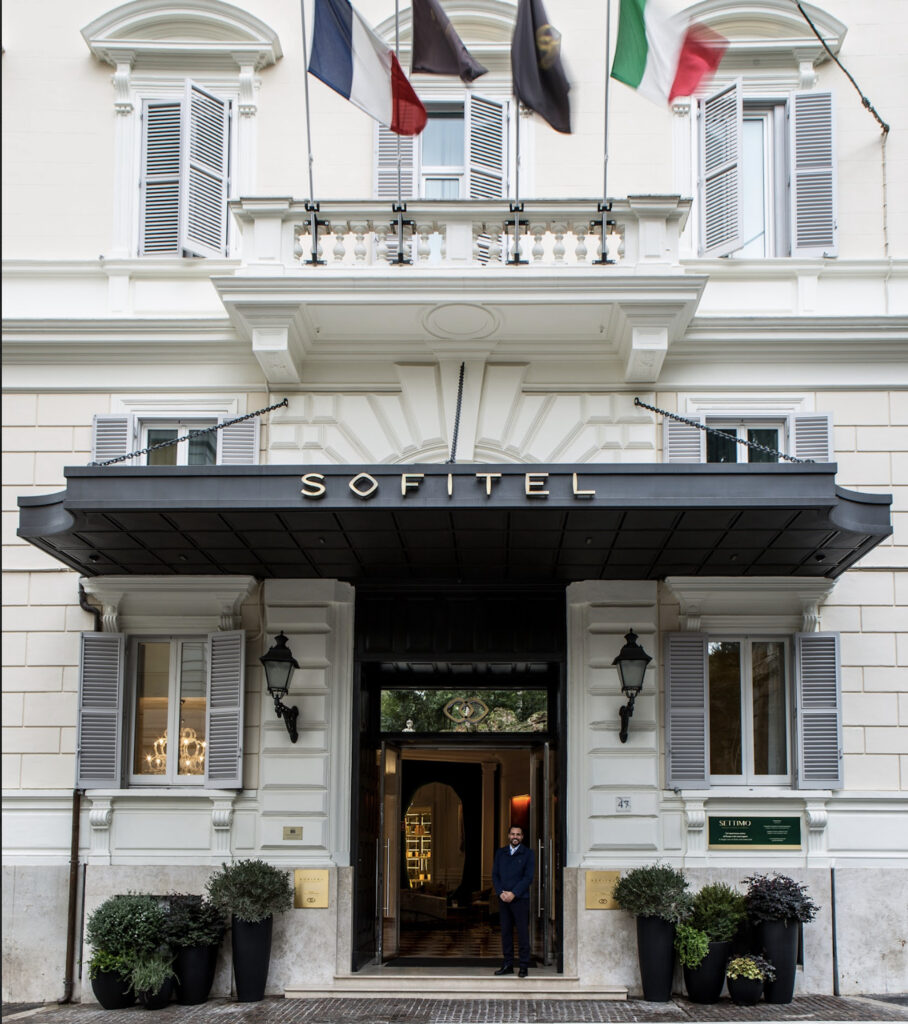
Travellers who want it both ways — a central location that’s just a little bit outside the tourist hub — will appreciate the aforementioned Sofitel Roma Villa Borghese, resting in a tidy and elegant residential neighbourhood skirting the Villa Borghese Museum and adjoining park. If you find yourself experiencing Parisian vibes, this is no accident. Enter the lobby, and you’ll find a beautiful convergence of Parisian and Roman chic, from the fashion-inspired artwork to the jewel-toned colour palette to displays of Aqua di Parma and Diptyque fragrance goods. The 78 rooms and suites continue the theme, with renaissance-inspired ceiling frescoes and a backdrop of blonde woods, white and gray walls, and pops of orange and bright blue framing high-fashion art photography and statement furnishings.
While Settimo, its 7th floor restaurant, dresses up for dinner, it is also an ideal spot for breakfast in Rome thanks to almost-360 degree views of the city centre and Vatican City. One can plan a full day of sightseeing by just walking out onto the patio and viewing Rome’s most noteworthy historic buildings and neighbourhoods laid out like an illustrated map. The patio feel flows inside with its fresh, garden-inspired hues and lighting fixtures. The breakfast spread is a harmonious blend of Parisian and Roman, with French butter and bruschetta at the bread station, perfectly cooked omelets to order, and a carefully curated selection of cheese and charcuterie. Dinner is an adventure in itself, with executive chef Giuseppe D’Alessio bringing modern and elevated twists to Roman cuisine without compromising the integrity of its original recipes.
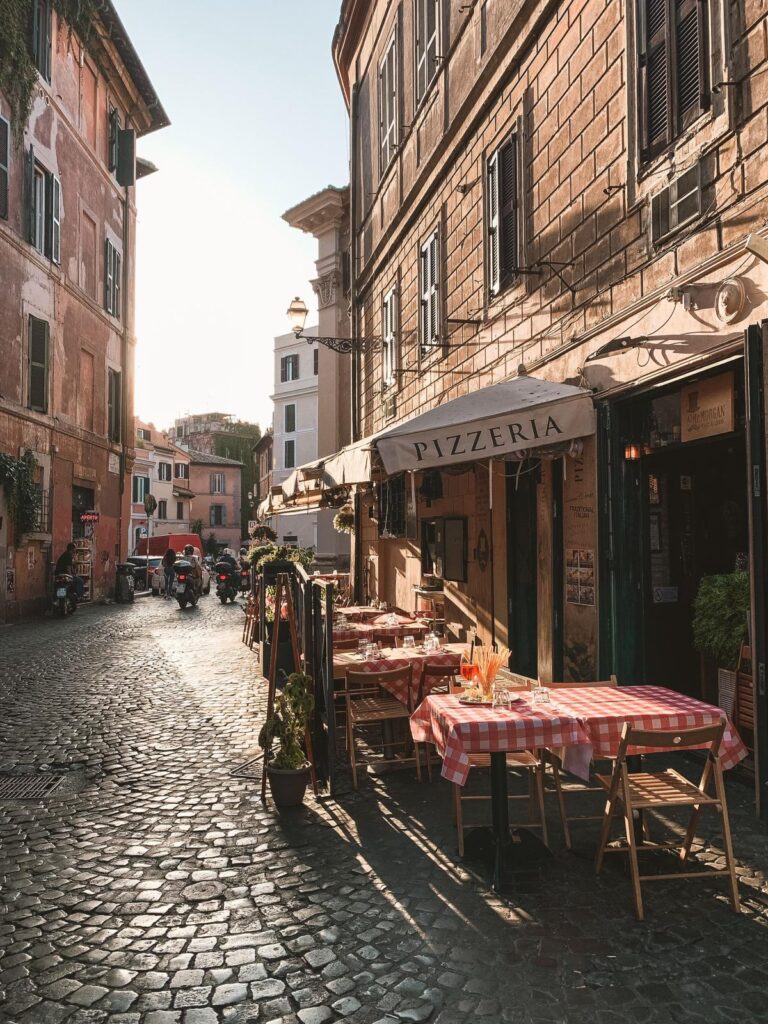
Between these hotels and Lauren’s favourite haunts, the big takeaway is this: Rome wasn’t built in a day, so don’t cram everything into a day or two if you really want to appreciate it at its best. “Every time I went to Italy before making the big move, everything about my life (in New York) was about planning and doing one thing after another… even dating… and sometimes working right through lunch,” she says. “The (Italian) locals taught me that during lunch hour, you’re not supposed to be running errands — you’re supposed to be having lunch. Here, people were finding the time every day to just enjoy life rather than run around. I needed to be on this wavelength.”


